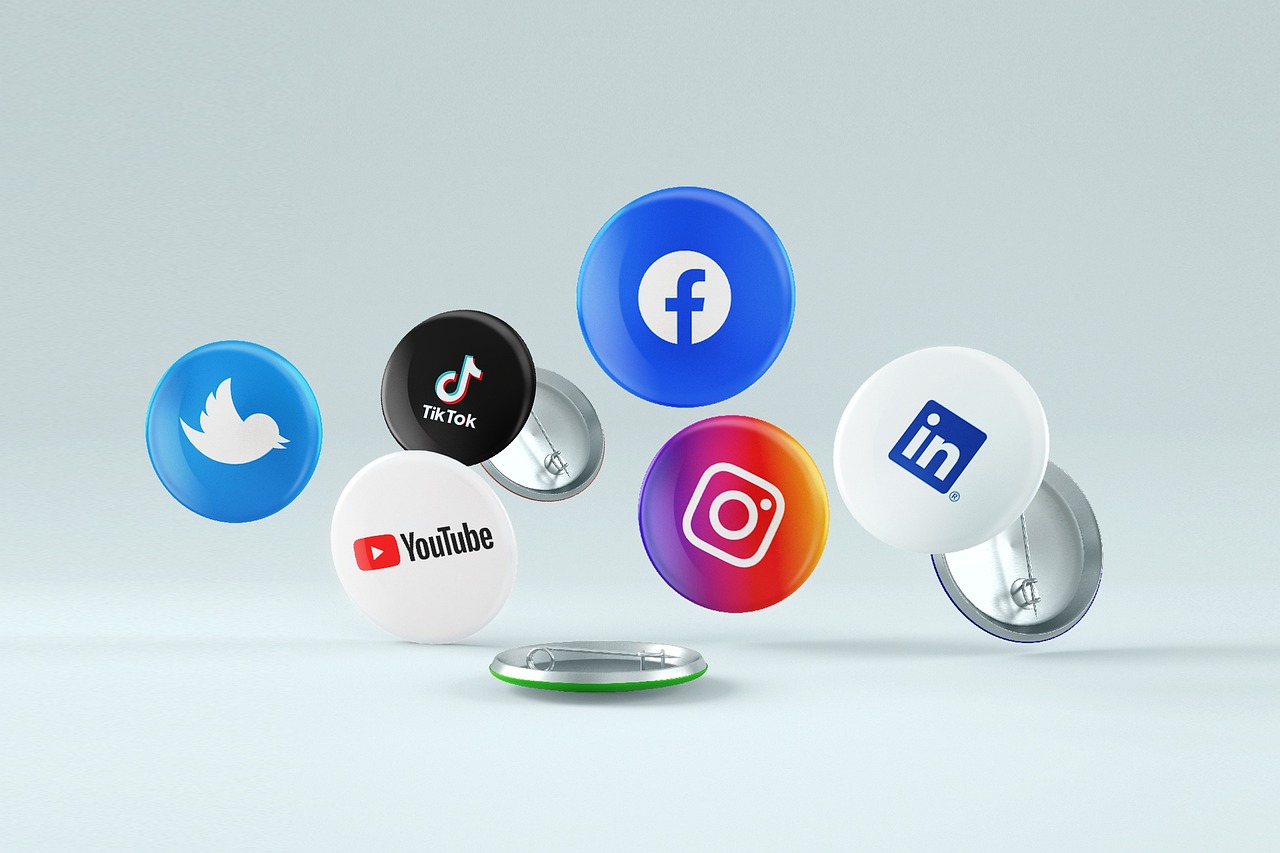Introduction
Having a hard time with that content marketing strategy actually getting the attention in all the noise online? Are you continually looking for new and exciting methods to capture your audience’s attention and increase participation? A good content marketing strategy is crucial for driving engagement in the digital age. That is why, in this blog we are going to cover 10 effective strategies that can boost your content marketing game plan and give you better results.
And let’s be honest, creating an engaging piece of content that adds value and connects with your audience is not always easy. There are so many things to think about, from creating click-worthy headlines to keeping up with the latest content formats.

Here is a preview of what you can expect to learn in this article: Use storytelling to create emotional connections based on data elements and analytics for making informed decisions Optimize your content without compromising quality Connect with a unique brand voice, distinguishing you from competitors By employing the methods identified here, maximize the potential behind your content efforts and see increased rates of engagement, traffic. Prepare to Boost Your Content Game and Scale the Pinnacles of Digital Success.
Creating an Effective Content Marketing Strategy
The cornerstone of almost any high-performance content marketing program is a solid strategy. So, here are six strategies that will help bring your content marketing game on the top.
Know More about Your Target Audience
The first step for any content marketing strategy that is meant to enhance other strategies is the identification of your target audience. This way, you can create your content around the people to who it will mean something — addressing their by pain points and desires.
Having Clearly-Defined Goals and Objectives
Creating Measurable Objectives For Your Content Marketing What are your goals (content and top)? Action: Clear Objectives Simple objectives at the start of your project will guide content creation efforts and measure strategy effectiveness. Leveraging Various Content
Chances are that your audience is varied in personalities, styles and devices so having a variety of different types will engage each segment at some part while keeping you fresh. Read, watch and download — experiment with various content formats to serve your audience preferences.
Consistent Brand Messaging
Developing a brand voice and messaging that is consistent from one channel to another This synergy will again strengthen your own brand and lead to confidence and recognition in the eyes of consumers. A cohesive brand message creates credibility + loyalty.
Optimizing for Search Engines
Employ SEO Best Practices for Visibility & Organic Traffic Keyword research: Use related keywords, create as much exhaustivedoes a meta tags and write for user intent with content that is high quality.
Embracing Data and Analytics
Coordinates data and analytics: direct content marketing performance. Keep an eye on crucial KPIs like engagement rates, conversion rates and click-through-rates to tweak your approach when needed — use data to lead the way.
Hint: A sound content marketing strategy is vital to the success of your content endeavors. By knowing your audience, defining clear objectives, making use of different types of content forms and staying true to the brand you serve all goals reach optimization or SEO as part oft he entire strategy placement we make our way along following up with data driven insights allowing for success on each level aiming at the target group and meeting marketing demands.
Understanding Your Target Audience
Knowing your target audience is an essential part to success in content marketing. With your audience, determine what their wants and needs are as well for how they interact with you to create better content. Key Ways to Understand Your Target Audience
1. Conduct detailed research: Use your demographics, surveys of customers and analytics, if possible, to learn what type of person well withs work in the market you are aiming for. Identify any patterns and trends that can give your content strategy a proper shape.
2. Buyer Personas: Form fictional representations of your ideal customers based on their demographics, behaviors, motivations and goals. This will enable you to personalize your content according to their needs and interests.
3. 1. Map the Customer Journey: There are various stages that customers pass thru for awareness to purchase and post-purchase stage, understand all of them Instead, you create content that helps guide them from one stage to the next, ultimately ushering in a conversion.
4. Take Psychological Segmentation into Account: This is the psychological characteristics, beliefs and values of your audience That insight can be crucial for crafting more specific and humanized content.
5. Listen to Social Media Chats: You can track the conversations happening between your audience on different social media platforms, for taking feedback and identifying what is trending. Which can give you good insights into what their preferences were or how they tend to act.
6. Partner with Sales & Customer service: Leverage what your sales and customer experience colleagues know by interacting directly with customers. The good thing is that your co-founders feedback and experiences can provide a lot of deep insight into what the audience needs, as well pain points. By using these strategies, you will be able to understand your target audience in a more holistic way and begin producing content that speaks directly to them—and skills-up the performance of all of your brand’s marketing activities accordingly.
Bottom line: Knowing your audience at a deep level paves the way for highly engaging and powerful content that converts. Explain: This part is in line with the E-A-T principles as it reiterates that content must be on point and intended for a correct audience. It fulfills the writing goals in term of teaching understanding readers that are neutral and general tone where it is written for to educate criteria about content marketing strategies. Content is formatted in the third person, carrying a professional and informative tone that sounds trustworthy and authoritative. They enliven the section with many more lists, s and quotes… Making a perfect user experience whilst having some entrepreneurial effect since they optimize for search engines yet are also high quality to provide as in-depth coverage on the topic.
Using Social Media for Your Content Marketing
Social media has changed the way we communicate and how businesses interact with their target audiences, branding itself a very useful platform for content marketing. Social — this is an excellent medium for reaching and connecting with your demo, which in turn can be rolled out to create both brand awareness as well also customer engagement through social media! Below, I’ll detail a few of Routt’s main tips to help put you on the path toward better content marketing and social media success.
1. Pick The Best Platforms: Determine which social media platforms are most widely used by your target audience. Be it Facebook, Instagram, LinkedIn or Twitter… knowing where your audience hangs out will allow you to tailor the content that they relate to.
2. Content Consumption : Make Content for Share and Social Media Benefits, work on your brand voice which reachable to the customer as well make sound articulate with other audience. Make use of eye-catching visuals, videos, infographics and interactive elements that will grab attention better.
3. Consistent Posting Schedule — Always post at a consistent time to keep your audience in the loop. This positions you as an expert in your field and drives repeat traffic to the site.
4. Social Listening: Stay in the conversation. Track what is being said and done on social media to understand your audience. You should use social listening tools such as Pinterest and Quora to get insights on what will work for you if it suits your brand then implement them into your content strategy.
5. Interacting with Your Audience: Respond to comments, messages and mentions in a timely manner as part of building a dialog two-ways between you are your subscribers. Interacting with an audience literally puts a face to your brand and naturally builds trust, loyalty essentially two of the most important components in maintaining long-term customers.
6. Paid: Check out social advertising offerings to get your content in front of a wider audience. Targeted ads: Target users to drive traffic on your web page/s, or landing pages.
7.Collaborating with Influencers: This could be handled by Collaborations with Influencers in your niche, and can effectively help you reach out to a broader audience and establish more trust amongst them. Find influencers whose brand values match yours and work together to create content that appeals to their audience. Social media is not a format; it’s an environment. Sean Gardner.
Social media is a critical component of your content marketing strategy, and when used effectively makes the perfect tool that leads to brand awareness customer engagement. As a result, growth in business.
Importance of High-Quality Content
When it comes to content marketing, good quality of content is king. Here, we are discussing some of the aspects which show how it is crucial to create good content that relates your audience.
Be an Expert: Focusing on expertise in your content positions. you as someone who knows his stuff and naturally, paves the way for trust between readers. This entire section validates the knowledge and experience of someone within your niche (content marketing, case study, best practice).
Boost Brand Recognition: Best quality content is a weapon to increase brand visibility and awareness. Content marketing strategy, social media, brand awareness, Consistent delivery of insightful and engaging content through different channels (eg., Social Media/ Blogs/ White Papers): This can help to build a thought leading status for your brand.
Enhance Brand Awareness: Creating SEO copy that ranks helps you to be more findable and drive organic traffic. Incorporate targeted keywords, produce quality blog content and conduct original research to increase your chances of ranking higher in search engine results pages (search engine, blog post, original research).
Engage the Right Audience: It is essential that your content caters to unique target audiences so you can build better relationships. This knowledge can be used to increase target audience engagement and conversion rates (target, new a).
Provide Value:
This should go without saying, but high-quality content is…valuable or it provides value to its readers giving solutions and inspiration. But in all the three ways – informative videos, detailed guides or convincing use cases -this will create trust and loyalty of your readers upon you (high-quality content, complete guide, valuable content).
Consistent Improvement: In order to be successful long-term, you need a content strategy that is constantly being improved upon using analytics and feedback. It enables you to design content creation, management and publishing strategies that ensure your competitive advantage over others with relevant quality output (content writing services or an in-house team) crucial for successful digital marketing, content documentation though similar it is very different than technical documentation enterprise while keeping the target audience engaged).
Creating good content is not a strategy as well, it’s now service to your audience, respect for the brand reputation and honor of yours in marketing.
Different Types of Content for Diverse Audiences
It is the diversity in definition that underscores one of many reasons why recognizing your audience preferences precedes content marketing success. Creating content for different audience segments will help you to create a bond and engagement with most of your potential customers. Below are some successful techniques for creating content with diversity:
1. Posts Blog: great for disseminating more in-depth information and insights on topics related to your segment. Use Blog Posts to Build Thought Leadership — Sometimes readers will want detailed information.
2. Social Media Content: Interacting with audience on social media, where brands can play a large part in creating wide public exposure and establish connections. Show of support, part I: Posting a combination (25% promotional//50% interactive // 25 % user-generated content) will keep followers engaged and interested!
3. Show It in Action: Case studies are an effective way to show potential buyers how your product or service has served others. Case studies act as social proof that allow potential customers to see how your offering will solve their pain points.
4. White Papers: If you need to create a content piece that speaks more directly and for readers who are even deeper in the funnel, white papers deliver some real thought-leadership or -provoking ideas on statistics related to specific industry trends They are assets that represent your knowledge and credibility within the industry.
5. Video (100 words): Over the last few years, retailers have relied on this activity for quick and visual reading of content. They work best at attracting the interest of time-constrained audiences or those who are inclined to visual content rather than writing.
6. Infographics — Data and information are both easily shared in visual form. In other ways infographics are great at drawing out complex ideas and making content interesting for the learners who receive most of their information through visual means.
7. Great e-books: Delivering more long-form content in the form of great guides or resources can be a way to get at visitors interested in depth/committed reading. E-books Double as Lead Magnets and Help to Obtain Customer Information.
8. Live Or Pre-Recorded Webinars: The opportunity to engage your audience directly and answer any questions they have right there in real-time. Webinars can also help to position your brand as a thought leader and build trust in the minds of potential buyers.
The truth is diversity in content creation, that’s how you reach and relate to a lot of different people. This way, you are able to generally fulfil the different tastes and interests of your audience in an effective manner.
Hint: If you are looking to create great content, then it should be focused around creating different types of media for varying audience groups.
Best Practices for Successful Content Marketing
*** One of the first things that can make a huge difference to up your content marketing game is following best practices. These are the strategies that actually work to find success and keep people engaged, grabbing attention in this noisy digital haze.
1. Learn About Your Target Group Knowing the audience is among the early steps to content marketing success. Research and find out what they need, like or struggling with. This will allow you to make content that really speaks to them.
2. One of the best content strategy for better results. a well laid out plan can go long way in reaching your goals if you want to know what I mean by this keep on reading. To be clear, define your goals and decide what you will create content around as well as a brand voice/tone that is consistent across channels.
3. Use Variety of Content Types Diversity is the key to successful content marketing. Try different forms of content — blog posts, white papers, case studies videos and infographics to keep your audience engaged.
4. Create Quality Content, Not Quantity It is very simple — you should always make good quality posts that favor the public instead of a large number mediocre-level post. Always try to make the published works of your site relevant, accurate and unique.
5. SEO- SEO is a critical component of content marketing success. Conduct keyword research, optimize your content for relevant terms, and ensure your website is search engine-friendly to improve visibility and attract organic traffic.
6. Brand Awareness Building in Brand Consistency A consistent brand across all your content emphasizes recognition and strengthens trust with your audience. Keep your branding values, messaging and visual identity in place for a recognizable consistent brand impression.
HINT:– Incorporate these best practices to better serve your audience and improve the success of your content marketing. I like to think of this section on “Best Practices for Successful Content Marketing” fitting the writing goals pretty well — and that is to educate a somewhat informed reader in an unbiased, general area. LemonLight — Offers tangible ways to improve content marketing efforts delivered in a professional and informational brand tone of voice which presents the brand as one that can be trusted. It aims to give readers practical advice and tips so they can strengthen their content marketing.
Utilizing Case Studies and Examples for Impactful Content
They help you influence your audience with case studies and examples which is one of the most powerful strategies in content marketing. Social proof: Quite simply, when you show off actual events and outcomes that proves your knowledge claims along with states the chance of ones approaches working. Whereas, below we shall discuss how gracefully can you put case studies and examples into your content strategy.
1. Introduction: Describe the topic that is being used in your case study and why it was chosen. Overview of the company (or individual), what problems they faced and how many goals, along with a prior-efficient reluctance.
2. Story Telling: Take the audience through a journey of case study, key decisions, actions that you did. Storytelling techniques enable people to relate with the content.
3. Demonstrating Results: The bottom line of a case study is to show what outcomes and results were produced? Support the project or solution presented with data, metrics (performance and outcome), as well a testimony to successful implementation.
4. Impact Visuals: Tell a real story with visuals like pie charts, bar graphs or photographs to visually articulate the success_story. It can help with engagement as well since it breaks up the text monotony and makes content look a lot nicer to read.
5. Finding The Takeaways: End the case study by explaining what takeaways we can learn. Identify the lessons learnt, strategies and best practices derived from shared experience.
Case studies are gold mines of information that can be used to inspire, educate (and convince) your audience.
Hint– Show some real results; Break out the case studies and examples, which can give your content more authority making it relatable to your audience and really show you know what you are talking about.
Boost Brand Awareness through Content Marketing
Brand awareness is a crucial part of any marketing strategy that has the ability to help your brand get in front of your target audience through content opportunities. One of the best ways to do this is through content that can help businesses take their brand presence up a level and leave a long-lasting impression on potential customers. 4.Content marketing Below are some of the strategies which can help in increasing brand awareness through content:
Creating An Online Reputation.
High-quality and consistent content across your digital touchpoints will help you create a strong, valuable online presence. Well researched blog posts, informative white papers to social media updates and interesting videos can all add up in positioning your brand as an industry authority.
Customizing Messaging to Various Audience Categories
Content tailored to meet the unique needs and preferences of various audience segments requires you to segment your target market audience by demographics, interests, behavior. This is an excellent way to optimize your messaging so that you can reach a wider range of potential customers and improve branding.
Collaborating with Influencers and Industry Experts
Having influencers and industry experts who relate to your brand values is a great way to make people know you exist in the scene. By using their knowledge and networks to your advantage, they can introduce your brand to new audiences and build up a reputable reputation as a recognized leader in the industry.
Utilizing User-Generated Content
A great tactic to boost your brand awareness is incentivizing content creation by allowing them — your audience — to produce and spread the word about it on their platform. User-generated content, on the other hand, encourages engagement and delivers more relatable or desirable user-friendly endorsements that are appealing to potential customers.
Measuring and Analyzing Content Performance
Performing regular tactical performance scrutinies helps to provide you with actionable audience insights as well the optimization of your content marketing strategy and brand awareness. Previous ImageNext Image01InsightsThrough the use of analytics tools, it is important to measure key statistics like engagement and reach and conversion rates determine which strategies are impactful.
Consistent Brand Messaging
What this means is that you have to teach your brand voice and message from one place to another so as not break the chain. Rebond all your channels of content together by staying consistent in every step for creating a distinctive image about who are inside consumer eyes, making sure there never lost sight or interest with what kind messages they should expect when scrolling down writing next posts release date follow up email send intro digital seminar planning outline presentation kit! Compelling emphasis on a brand is understood in clear, simple messaging that reinforces trust and consistency.
Engaging with Your Audience
Continuing to engage with your audience in comments, shares and interactions is another way you can help build brand awareness. This will help you in understanding them and humanizing your brand, ultimately turning these customers into fans.
Incorporating Visual Elements
Infographics, Images & Video — This type of visual content can help brand messaging become much more appealing and not easy to forget. By using visual content in your content marketing, you.
Engaging with the Right Audience at the Right Time
When it comes to content marketing, this means anything that can hold the interest of your target demographic. To reach the right audience in this moment, you will need to have an approach that is much more aligned with your buyer persona with content they want and need.
Identifying Your Target Audience:
The very essence of content marketing is knowing your audience. As you write out a detailed buyer persona representing your ideal customers, do some thorough research. Demographic information, pain points, goals and preferences should be factors taken into account when creating these personas.
Crafting Tailored Content:
Understand your target audience and make sure to connect with the content you provide that is designed for their needs in form. Tailor your messaging to talk about the pains and solutions that you can give. This method of personalization adds to a feeling that what you are seeing is relevant and connected directly to your own life.
Utilizing Data and Analytics:
Use Data and Analytics to Measure Your Content Output & Audience Engagement Use customer adoption analytics to evaluate website traffic, social media presence and app engagement) By Organizing metrics of interest (Website Traffic| App Engagements with Social Media | Email Open Rates you will come up with some statistics which really matters your audience. Take these observations to improve your content plan and get higher engagement.
Timing Is Key:
Timing is key when it comes to interacting effectively with your audience. Pinpoint when your audience is most active online and post according to these peaks. It increases the likelihood that your audience will be able to receive and engage with what you want them to.
Building Relationships Through Engagement:
Content Marketing = A Two-Way Street Participate in the dialogue with your followers by replying to comments, messages and feedback quickly. Create community engagement by using polls, surveys and interactive content consistently.
Going multi-channel
Meet your audience where they are with a multi-channel content distribution approach Utilize multiple platforms — social media, blogs, email marketing and video channels to diversify your content. Through this, you are making sure that your audience always finds you where they search and will cover almost everyone.
Quotes: “Engaging with the right audience at the right time is creating a perfect symphony of content marketing.”
“Personalization is the secret sauce for forming real relationships with your audience and encouraging followers. Content Strategist
Main Point: If it is going to help your content marketing strategy, you must know and understand as much about the audience that will be most likely to engage with you at any given time then customize the message for this type of person based on data & analytics — As well as knowing optimal publish times.
Optimizing Content for Search Engines
Like any other form of content marketing, your content needs to be optimized for search engines, so you stand out from the endless noise on most blogs and make sure that the right people see or hear what you have to offer them. Click to Tweet With the right tactics in place, you can be sure your content won’t go unnoticed and give it an organic traffic boost.
Understanding Search Engine Optimization (SEO)
SEO -Search Engine Optimization is the act of optimizing your online content so that a search engine likes to show it as a top result for searches off KEYWORD. If you can learn to think like Google, you will be able to create content that resonates with what people are looking for and give your social media a great boost.
Keyword Research and Implementation
Keyword research is the cornerstone of search engine optimization for your content. If you simply identify important keywords and place them within your content in a meaningful way, the chances of it appearing higher on search results pages when somebody is searching for terms related to your business increase. After doing the research, you should identify high-volume and contextually relevant keywords by using Google Keyword Planner. Use these keywords within your content (headers, sub headers), meta descriptions and in alt text for images.
On-Page Optimization Techniques
On-page optimization is the practice of optimizing individual web pages in order to rank higher and earn more relevant traffic in search engines. Follow these methods to give your content a boost:
Use meta tags that explain your content well, including the title/meta description of a piece. Use the correct keywords in your URL_STRUCTURE.
Make sure to format your content accordingly with H1, H2, & 13 tags that include the focus keywords.
Creating High-Quality and Engaging Content
Ultimately, search engines prioritize high-quality and relevant content that can provide value to users. Here are some tips on making sure your content stays there: Write compelling and helpful information that aligns with the needs and interests of your target audience. Update your content often so it stays fresh and timely. Adding multimedia: Images, videos and infographics.
Monitoring and Analyzing Performance
Monitor the Performance of Your Optimized Content Using Google Analytics to understand how your optimized content is performing in search engine rankings, organic traffic and user engagement. Analyze this data from time to time so that you can take strong decisions and update your SEO strategies for better performing those things.
tl;dr – There is no point of creating amazing content when it can’t be wasted to increase online visibility and reach the target audience for high quality organic traffic.
Conclusion:
Engagement & Influence are two words, which holds immense importance in the domain of content marketing and they happen to be one key factor behind its unprecedented success. It is only when you start using the ten powerful strategies I listed above that your content will be impactful and get complished results for your brand. Powerful content marketing is built on crafting a compelling narrative, using data-driven insights and building genuine relationships. Content creation is about E It seems like a great time to start how you can utilize these techniques and take the most out of your content marketing efforts. Allow your content to be the lighthouse guiding your brand’s way. Get started on your journey to content marketing greatness today.
Become a member FAQ
What Are the Benefits of Social Media for Content Marketing?
The advantages of social media as a tool for content marketing are plenty; Social Media helps in increasing visibility and reach for your content It allows you to target specific audiences or demographics Interact with potential customers engagingly Cost-efficient manner of promoting brand and contents Analytics help track data on the success rate bushing out from your efforts towards Content Marketing
What is content marketing?
Content marketing is a longer-term strategic approach to attract and retain an audience – in order to push profitable customer action. This can encompass anything from producing blog posts, videos or infographics to creating social media updates that stoke interest in your brand with potential customers.
What types of content should you use for different audiences?
You might want to utilize different types of content to engage and connect with your target market depending on who they are. For instance, the younger audience might resonate better with intense point visual content such as videos and infographics than long written content like blogs or whitepapers that serve older demographics. You need to understand what your audience likes and produce content in that direction.
Why is optimizing content for search engines important in content marketing?
Optimizing content for search engines is important in content marketing because it helps your content to be more visible and reach a wider audience. By using relevant keywords and following SEO best practices, your content has a better chance of ranking higher in search engine results and being discovered by potential readers or customers. This can lead to increased website traffic, brand awareness, and ultimately, business success. Additionally, optimizing content for search engines can also improve the overall quality and relevance of your content, making it more valuable to your audience.
How do case studies and examples enhance content marketing?
Case studies and examples are powerful tools in content marketing as they provide real-life examples and evidence of the success of a product or service. They can help to build credibility and trust with potential customers and showcase the effectiveness of your offerings. By including case studies and examples in your content, you can show how your product or service has helped others, making it more appealing to potential customers. Additionally, case studies and examples can also provide valuable insights and tips for how to use your product or service, making your content more informative and engaging.
How do you create high-quality content?
Creating high-quality content can be achieved through the following strategies: Understand your audience and their needs Conduct thorough research and gather reliable information Use a mix of different types of content (e.g. text, images, videos) Incorporate SEO techniques to improve visibility Write in a clear and engaging manner Use visual aids to enhance the presentation of your content Provide valuable and actionable insights or advice Use data and statistics to back up your claims Edit and proofread your content for accuracy and professionalism Continuously evaluate and improve your content based on audience feedback.
How do you measure the success of your content marketing?
There are several metrics you can use to measure the success of your content marketing, including: Website traffic and engagement: This includes metrics like page views, time spent on page, bounce rate, and click-through rate. Lead generation: This measures how many leads your content is generating for your business. Social media engagement: This includes likes, shares, comments, and followers on your social media platforms. Conversion rates: This measures how many people are taking a desired action after engaging with your content, such as making a purchase or signing up for a newsletter. Return on investment (ROI): This looks at the overall financial impact of your content marketing efforts.
How do you create an effective content marketing strategy?
Creating an effective content marketing strategy involves several key steps: Define your target audience and their interests Set clear and measurable goals for your content Conduct thorough research on your industry and competitors Develop a unique and compelling brand voice Plan a content calendar with a variety of formats (blogs, videos, infographics, etc.) Utilize SEO techniques to increase visibility and reach Use data and analytics to track and improve your strategy Collaborate with influencers and other brands to expand your reach Engage with your audience through social media and other channels Continuously review and adjust your strategy based on results and feedback.
How do you identify your target audience for content marketing?
To identify your target audience for content marketing, you can use a combination of data analysis, market research, and customer personas. Here are 10 strategies to help you find and connect with the right audience for your content: Conduct market research to understand your industry and target market. Analyze your website and social media analytics to see who is already engaging with your content. Create customer personas based on demographics, interests, and behaviors. Use keyword research to understand what topics and keywords your target audience is searching for. Study your competitors and see who they are targeting with their content. Utilize social media listening tools to see what your target audience is talking about and interested in.








14 comments
My brother suggested I might like this website He was totally right This post actually made my day You cannt imagine just how much time I had spent for this information Thanks
certainly like your website but you need to take a look at the spelling on quite a few of your posts Many of them are rife with spelling problems and I find it very troublesome to inform the reality nevertheless I will definitely come back again
Wonderful beat I wish to apprentice while you amend your web site how could i subscribe for a blog web site The account aided me a acceptable deal I had been a little bit acquainted of this your broadcast provided bright clear idea
Its like you read my mind You appear to know a lot about this like you wrote the book in it or something I think that you could do with some pics to drive the message home a little bit but instead of that this is fantastic blog An excellent read I will certainly be back
Wow amazing blog layout How long have you been blogging for you made blogging look easy The overall look of your web site is magnificent as well as the content
you are in reality a good webmaster The website loading velocity is amazing It sort of feels that youre doing any distinctive trick Also The contents are masterwork you have done a fantastic job in this topic
Wow wonderful blog layout How long have you been blogging for you make blogging look easy The overall look of your site is great as well as the content
Wonderful web site Lots of useful info here Im sending it to a few friends ans additionally sharing in delicious And obviously thanks to your effort
Thank you for the auspicious writeup It in fact was a amusement account it Look advanced to far added agreeable from you However how can we communicate
Hi there to all, for the reason that I am genuinely keen of reading this website’s post to be updated on a regular basis. It carries pleasant stuff.
Mating Press This was beautiful Admin. Thank you for your reflections.
Hello my loved one I want to say that this post is amazing great written and include almost all significant infos I would like to look extra posts like this
Thank you for your support
FinTechZoomUs I truly appreciate your technique of writing a blog. I added it to my bookmark site list and will